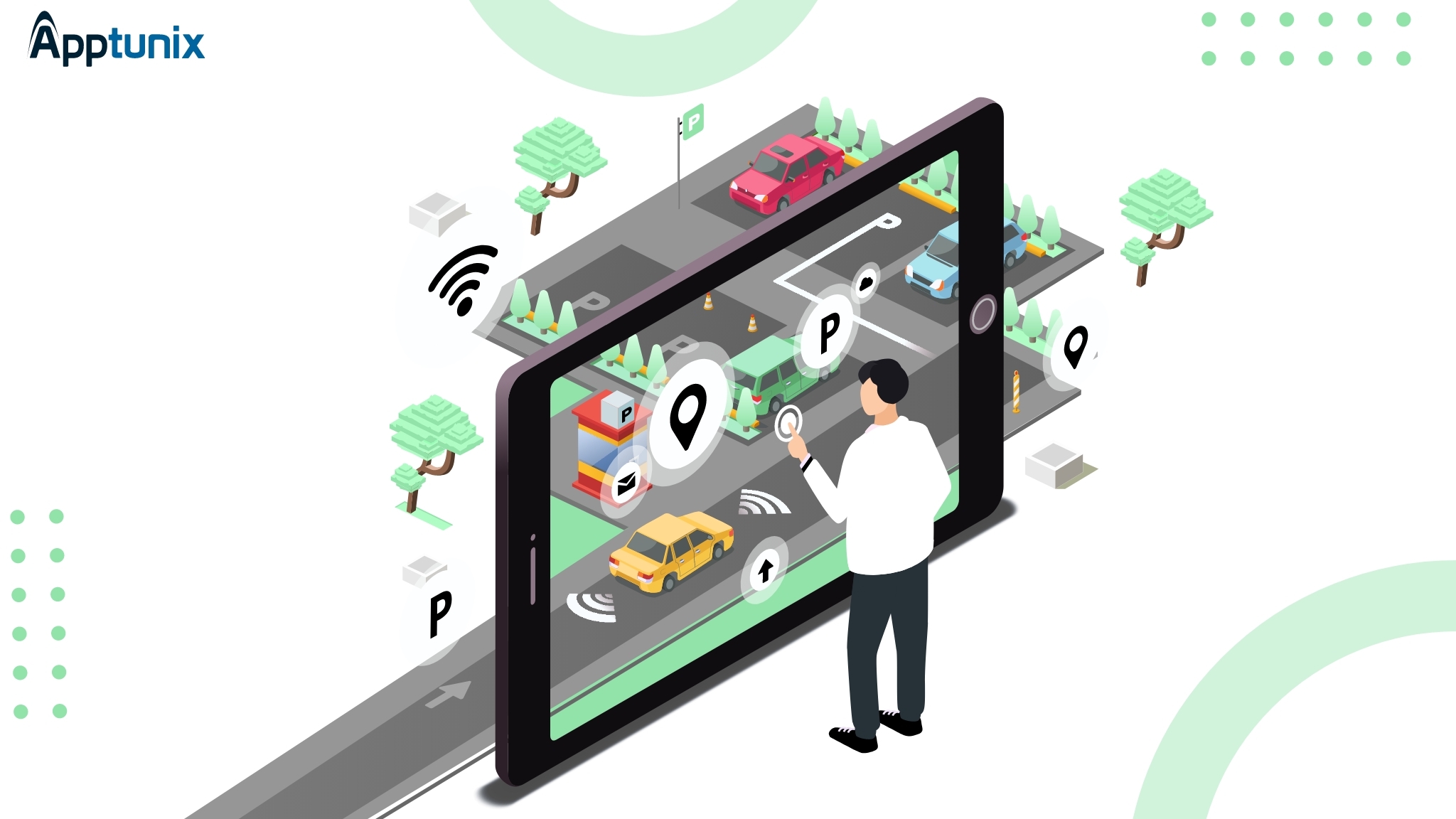Don't miss the chance to work with top 1% of developers.
Sign Up Now and Get FREE CTO-level Consultation.
Confused about your business model?
Request a FREE Business Plan.
Headless Commerce for Online Grocery Retailers: Is It Worth the Hype?
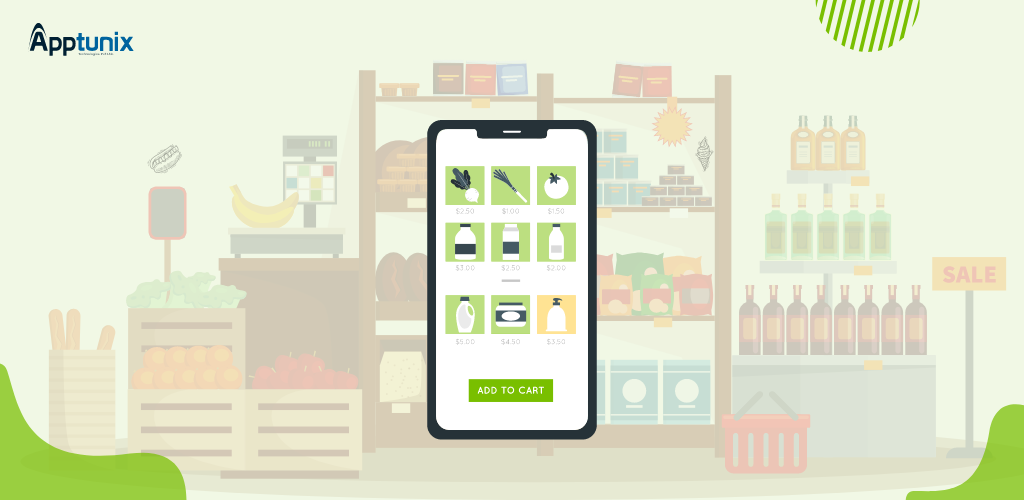
In 2020, the online grocery delivery industry evolved overnight to serve the changing demand of consumers after the COVID 19 pandemic. The combination of stay-at-home orders, fear of catching the disease, and the continuous need for grocery items made the online grocery delivery services indispensable.
While before the pandemic, consumers liked to pick up their groceries themselves to avoid extra charges, now their priorities have changed. And this change is here to stay, accelerating the growth of grocery app development services in many countries, like the USA and UK. According to research, grocery eCommerce sales increased from 3.4% in 2019 to 10.2% in 2020 of the total grocery sales.
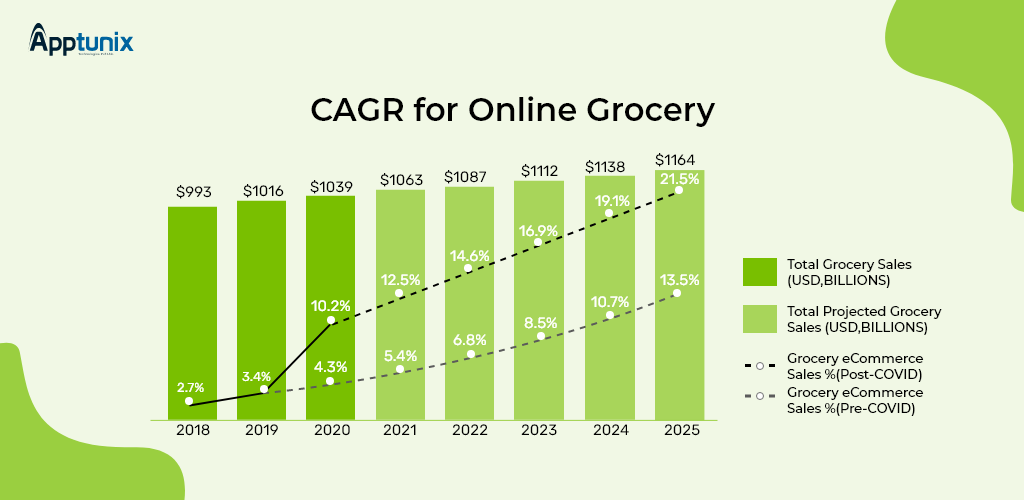
But, most of the grocery retailers are not able to turn this market potential into an opportunity. They are afraid of low-profit margins and the high investment needed to make a shift to the online channels. Most of the grocers still see it as a non-profitable move, instead of an opportunity to expand their business.
Now, how can they utilize this boom in the market to the fullest?
The answer is by adopting a modern technology that lets them sell their products through different touchpoints and in various consumer markets. A technology that makes business expansion seamless and also provides a secure experience for consumers. In the blog, we are going to discuss one such technology and that is Headless Commerce. So, let’s get started?
What is Headless Commerce?
To put it in simple words, Headless Commerce refers to the decoupling of the frontend and backend of an eCommerce experience. It is a modern technology in which businesses use APIs that lie at the center of this decoupled framework to deliver content without depending on the changes made at the backend.
Headless Commerce is a boon for businesses that plan to rapidly design, deploy, and optimize customer experiences to personalize them and increase conversion rates. Headless Commerce APIs enable businesses to deliver CX to any screen or platform they desire.
Here is a simple representation of how a Headless Commerce solution looks like:
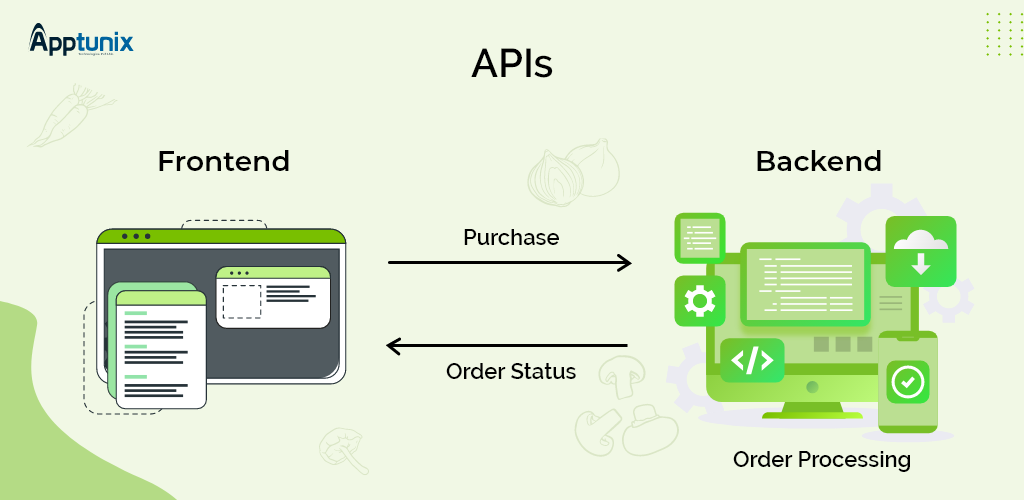
The whole architecture of a headless solution revolves around APIs. It is becoming highly popular in the eCommerce sector since it lets brands deliver beautiful experiences across multiple touchpoints seamlessly.
This approach provides marketers the ability to deliver high-quality content by developing landing pages or via making modifications to the existing pages without the help of developers. And an eCommerce solution is plugged in the backend to manage other functionalities like processing orders, making payments, and so on.
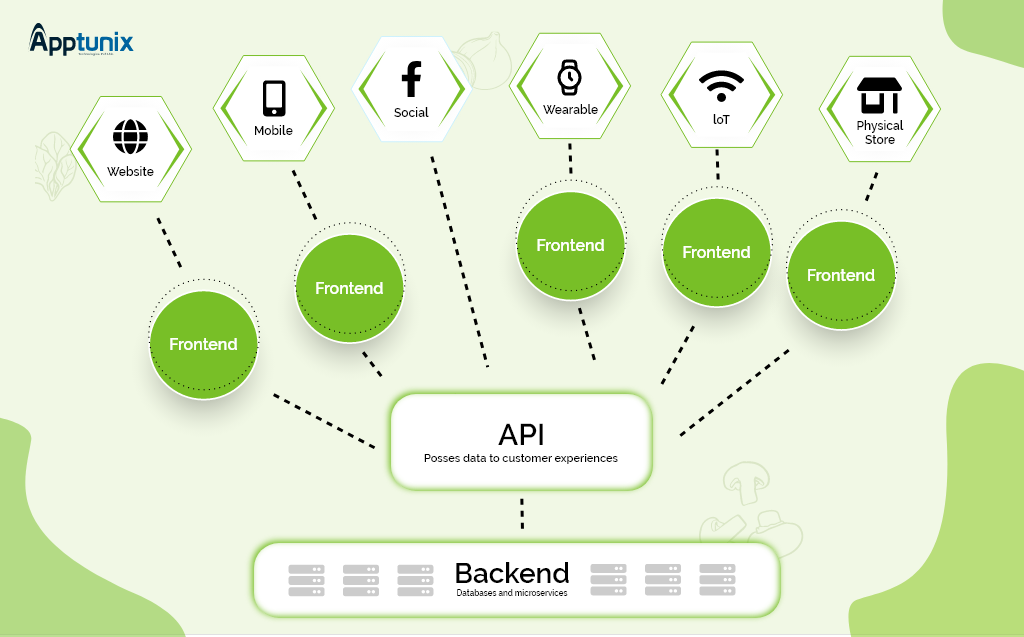
Let’s now see how an American multinational retail organization, Walmart, is harnessing the power of headless commerce to drive business.
The Story of Walmart Adopting Headless Commerce Technology
According to Statista, grocery sales accounted for more than 56% of the net sales of Walmart in the USA. The brand is an early adopter of headless technology and they provide robust solutions having fast loading speed and intuitive designs to attract as well as retain customers.
Separating the front end and back end of a grocery online store can affect the speed and efficiency of a business positively and Walmart is proof of this statement.
For Walmart, headless commerce technology has paid off consistently. According to CNBC, the brand’s online sales were up 41% in the third quarter of 2019 with 55% of customers saying they now prefer to shop on Walmart over Amazon.
In an interview, Brett Bigs the CFO at Walmart said that the company plans to grow its marketplace business by providing a seamless shopping experience while also maintaining the structure to process orders efficiently. This type of growth means having a front end that takes care of CX and a robust backend that could handle millions of transactions per day without making the consumer-facing side of the business cluttered.
In one way or the other, the Headless approach is catching fire among retailers. Some use APIs to craft dynamic pages and others use it for inventory management based on real-time location-based data. Reports say that 61% of online businesses plan to implement some form of headless in the year 2021.

6 Ways a Headless Approach Can Benefit Grocery Delivery Businesses
For other eCommerce businesses, just three things are enough to drive success: an engaging online store, warehouse to store products, and an order fulfillment system. However, if you are a grocery store owner, things are going to be much more complex.
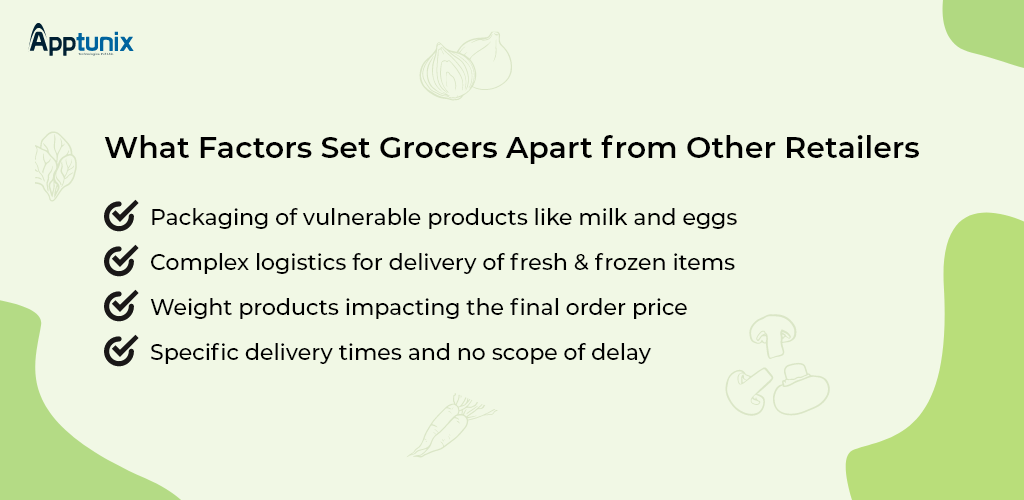
Due to all these challenges, winning customers’ trust is complex for online grocery retailers. An increasing number of variables and moving parts make online look like a risk and restrict grocery retailers from embracing the growth opportunities that come with having a digital presence. Thankfully, the headless approach is here to help and it can let e-grocers make a difference by tackling all challenges strategically. Let’s check how.
1. Deliver a Unified Customer Experience Over All Sales Channels
Whether it is about buying groceries or footwear, customers’ journeys are not at all linear. They may search for the products they need on mobile and make a purchase on desktop. However, it is crucial for all retailers to provide a seamless and consistent experience over all devices.
A headless architecture can help e-grocers set up the same. It empowers them to deliver unified customer experiences at every touchpoint with the help of one platform that centralizes the data of customers and provides an API layer that lets developers add commerce into any CX.
For example, if a shopper visits your grocery store and he has an item in the cart that is not yet checked out, you can notify your in-store associate who could then help the shopper to push the transaction forward. A win-win for brands!
2. Introduce New Order Picking and Delivery Models to Increase Efficiency
As sales channels are increasing, from desktops to mobiles to tablets to different physical grocery stores, delivery models will have to catch up. A headless approach can help businesses introduce new methods of picking and delivering orders to better improve business efficiency and increase customer satisfaction by delivering fresh products on time.
Using a headless solution and a microservice architecture, grocery businesses can implement processes like wave picking, weight-based automatic price calculation, and route-specific delivery to get to the customers on time and with fresh products.
Thus, if you run multiple grocery stores across the country or internationally, it will surely pay off to develop headless commerce solutions specific to your business needs.
A headless eCommerce platform provides the tools and features you need to ensure the accuracy and speed of every customer’s orders. From auto-scaling to catalog management, it makes managing pick-up and delivery easy as pie.
Also Read: How InstaCart Works: Business Model of the Best Supermarket In Your App Store!
3. Improve Sales by Delivering a Highly Personalized CX
Who doesn’t like a personalized buying experience? We all prefer to buy from shops where people know us and what we like. Online grocery shoppers want the same kind of customized experience too and you can deliver it with headless commerce.
Since it makes all customer data easily accessible and there is no shortage of information, you can easily personalize experiences. Your team can personalize promotions, product recommendations, and even browsing options according to different channels to provide relevant offers that increase the conversion rates.
For example, a shopper with a purchasing history of buying pasta and mayonnaise could get an in-store offer on her mobile device for a packet of oregano.
4. Leverage Hyperlocal eCommerce or Expand Internationally
When it comes to grocery shopping, the taste and buying preferences of consumers are different in every region. The hyperlocal model is a way to partner with local businesses to fulfill these changing demands, online as well as offline. It proves to be cost-effective and also provides customers with different choices.
Even national grocery businesses need to operate on a regional or local level and headless commerce will let grocers easily plug in new services from different regions. Also, if you plan to expand your grocery business internationally, your team will be able to develop new experiences easily and connect new sales channels later on with a headless approach.
For example, suppose you at present operate several brands with different offerings in several regions. However, if you want to use the same commerce capabilities and processes to save cost, you can do it using a headless commerce solution and have it all operating seamlessly on one unified commerce platform.
5. Monetize All Channels
Grocery products are always on the top of everyone’s mind. For example, if a person is sitting in an office, crawling Instagram and suddenly comes across an advertisement for grocery products. It will immediately ring a bell in his mind and he will recall all he needs to cook dinner after going home.
Using a headless approach, you can monetize that moment by letting him do the transaction immediately over Instagram. With the right headless platform for your grocery business, you can create multiple revenue streams by letting the customers purchase on any social channel, device, app, and you manage all these transactions from one central location.
6. Headless Makes it Easy to Evolve and Scale
A software solution developed using APIs and microservices can undoubtedly help your business cater individually to multiple touchpoints. But, the feature that attracts most of the retailers is its ability to allow businesses to evolve and make amendments in the experience they provide.
For example, if you feel that your particular touchpoint needs updation or changes like introducing a new payment channel, let’s say. You can do this without disrupting the whole functionality. On the other hand, if you were using a traditionally-built solution, it would have to go offline for maintenance purposes and will cause inconvenience to customers
How Apptunix Helped an Online Grocery Store Using the Headless Approach?
In 2020, a leading grocery retailer from Canada was facing hurdles in growing revenue amid the lockdown as foot traffic became almost negligible. They were having an online platform to sell essential items but the experience of their website was poor. Moreover, customers could not pay online. They were facing problems like:
- Slow website speed with just 5% of the pages loading under 7 seconds
- A very high cart abandonment rate due to fewer payment options available
We suggested the team convert their storefront into a Progressive Web App and follow the decoupled backend and frontend approach for easy scaling. This high-risk but much-needed decision paid them off right after they launched their PWA with multiple payment options and a seamless CX.
The percentage of pages loading under 3 seconds soon jumped to 80% and they acquired new users fast owing to their perfect marketing strategies and increased visibility of their PWA. Now they have multiple grocery stores across Canada and are managing their online operations using a unified commerce platform, easily and effectively.
All in all, the decision of going headless and building a PWA proved fruitful for them and now they are planning to expand their business to different countries.
The Crux: Is It Really Worth It?
Well, that was all about Headless Commerce and how it can help grocery businesses scale and provide a relevant experience to customers. However, you must keep in mind that no solution is a right fit for all types of business needs. Thus, think carefully before you make a move to headless and pay attention to who you work with.
Microservice architecture and headless commerce are scalable and agile development technologies that allow you to evolve with changing needs of consumers and grow at your own pace without any restrictions. Before you make the transition, remember the below-mentioned factors about headless technology:
- It comes without a front-end. So, you will have to invest in front-end development from scratch. You can use React or Vue for this purpose.
- Setting up a headless commerce solution is a bit time-consuming process at the start. But, once you set it up, you enjoy unlimited flexibility.
- You will require a team of proficient developers to build and maintain an eCommerce platform the headless way. The developers you hire must be proficient in front-end and back-end development.
Due to the challenges associated with a grocery business, it is tedious for grocers to deliver a seamless customer experience. Thankfully, headless commerce is a technology that can make it easy for them and it is totally worth it.
If you too are looking for proficient eCommerce grocery delivery app developers who can help you scale your grocery business in 2022 and years beyond, get in touch with developers at Apptunix.

Rate this article!
(1 ratings, average: 5.00 out of 5)
Join 60,000+ Subscribers
Get the weekly updates on the newest brand stories, business models and technology right in your inbox.

Nikhil Bansal is the Founder and CEO of Apptunix, a leading Software Development Company helping startups as well as brands in streamlining their business processes with intuitive and powerful mobile apps. After working in the iOS app development industry for more than 10 years, he is now well-equipped with excellent problem-solving and decision-making techniques.

App Monetization Strategies: How to Make Money From an App?
Your app can draw revenue in many ways. All you need to figure out is suitable strategies that best fit your content, your audience, and your needs. This eGuide will put light on the same.
Download Now!Subscribe to Unlock
Exclusive Business
Insights!
And we will send you a FREE eBook on 'Mastering Business Intelligence.
